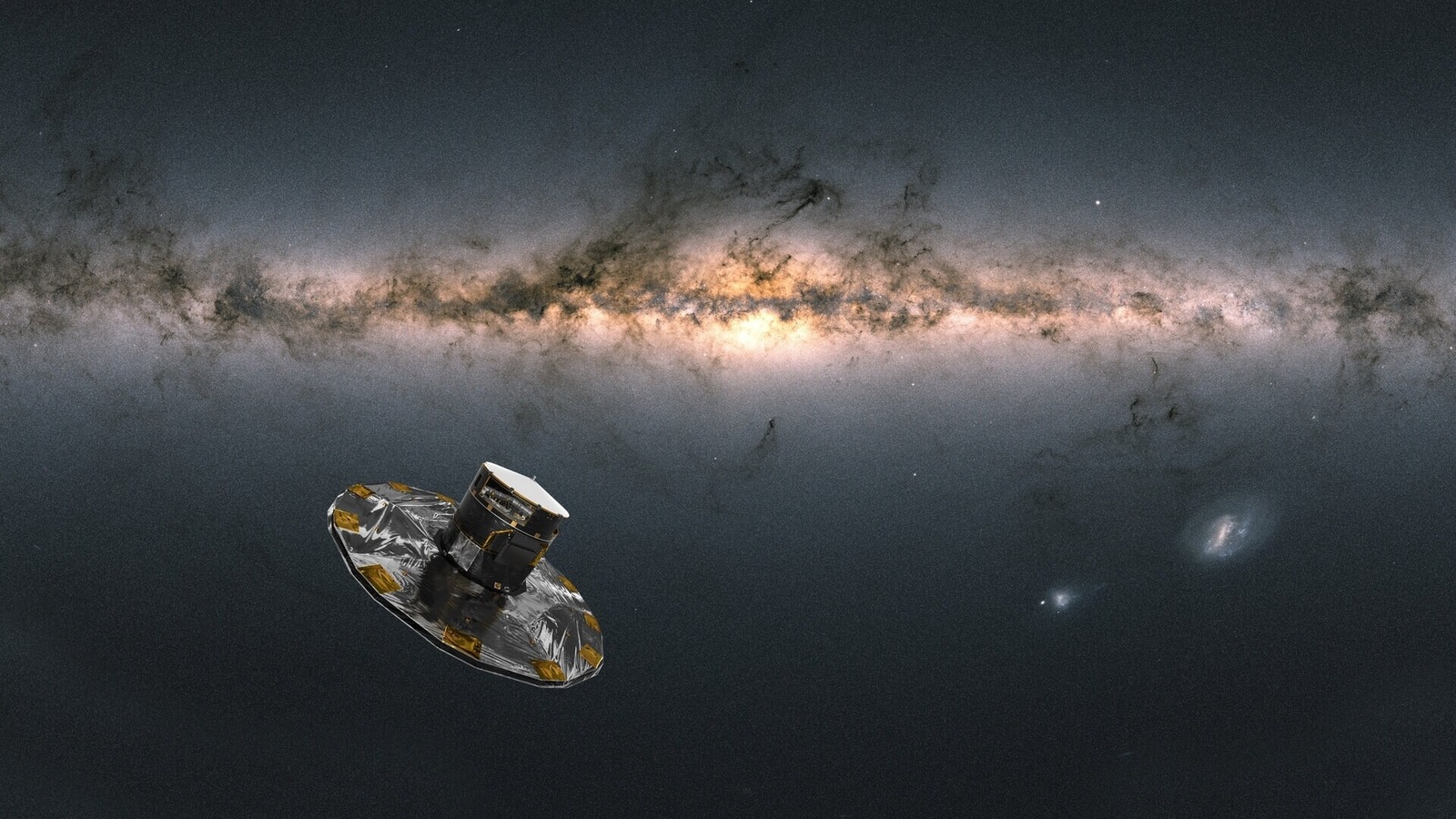Gaia to shed new light on Milky Way Galaxy, asteroids, stars and more today! Watch it LIVE online, know when and where
The European Space Agency and Gaia mission representatives will release new data today revealing new insights into the Solar System, Milky Way galaxy, asteroids, and wider cosmic neighbourhood. Here is when and where to watch the event live online.
New data will be released by the European Space Agency (ESA) from its Milky Way Galaxy-charting Gaia mission on Monday June 13. “Join European Space Agency and Gaia mission representatives on Monday 13 June for a preview of the third major data release. This world-class treasure trove is set to reveal new insights into our Solar System, our Milky Way galaxy, asteroids and our wider cosmic neighbourhood,” ESA said in a release. It can be known that the event can be watched live on ES Web TV from 8:00-9:00 UTC (10:00-11:00 CEST) that is 1:30PM -2:30PM IST.
Explaining what Gaia is, ESA said, “Gaia is ESA’s mission to create the most accurate and complete multi-dimensional map of the Milky Way. This allows astronomers to reconstruct our home galaxy’s past and future evolution over billions of years, better understand the lifecycle of stars, and our place in the Universe.” Also Read: Jupiter’s composition reveal shocking facts! Here’s what study says
What is new in the Gaia data release 3
Since Gaia launched in 2013, data sets were released in 2016 and 2018 and a subset of the third data set in 2020. These data releases contained stellar positions, distances, motions across the sky, and colour information, among others.
Gaia will release its third full data set today, which will contain yet more and improved information about almost 2 billion objects in the Milky Way, mostly stars, and a subset of Solar System objects and extragalactic sources. These data were collected between 25 July 2014 and 28 May 2017.
New in this data set are spectra for a significant number of objects, which can be used to determine accurate luminosities, temperatures, masses, and chemical compositions. This release also includes radial velocities for 33 million stars, a five time increase as compared to data release 2. Also Read: Space triumph! Photos of 4 brown dwarfs taken by group of researchers
Also new in this data set is the largest catalogue yet of binary stars in the Milky Way, which is crucial to understand stellar evolution. Additionally, this release includes information about stars that change brightness over time, Solar System objects such as asteroids and planetary moons, and galaxies and quasars outside the Milky Way.
Together with the new data set, about fifty scientific papers will be published of which nine are specifically dedicated to demonstrating the potential of Gaia’s new data.
The full data release 3 which will be made public today will contain: Largest ever low resolution spectroscopy survey; Largest ever radial velocity survey; Largest ever collection of astrophysical data for stars in the Milky Way; For many classes of variable stars: largest survey ever; Binary star survey that surpasses all the work on binary stars from the past two centuries; Highest accuracy survey of asteroids combining their compositions with their orbits; First space-based all-sky survey of quasars and of the shape of galaxies in the local Universe; Andromeda Galaxy photometric survey.
For all the latest Technology News Click Here

